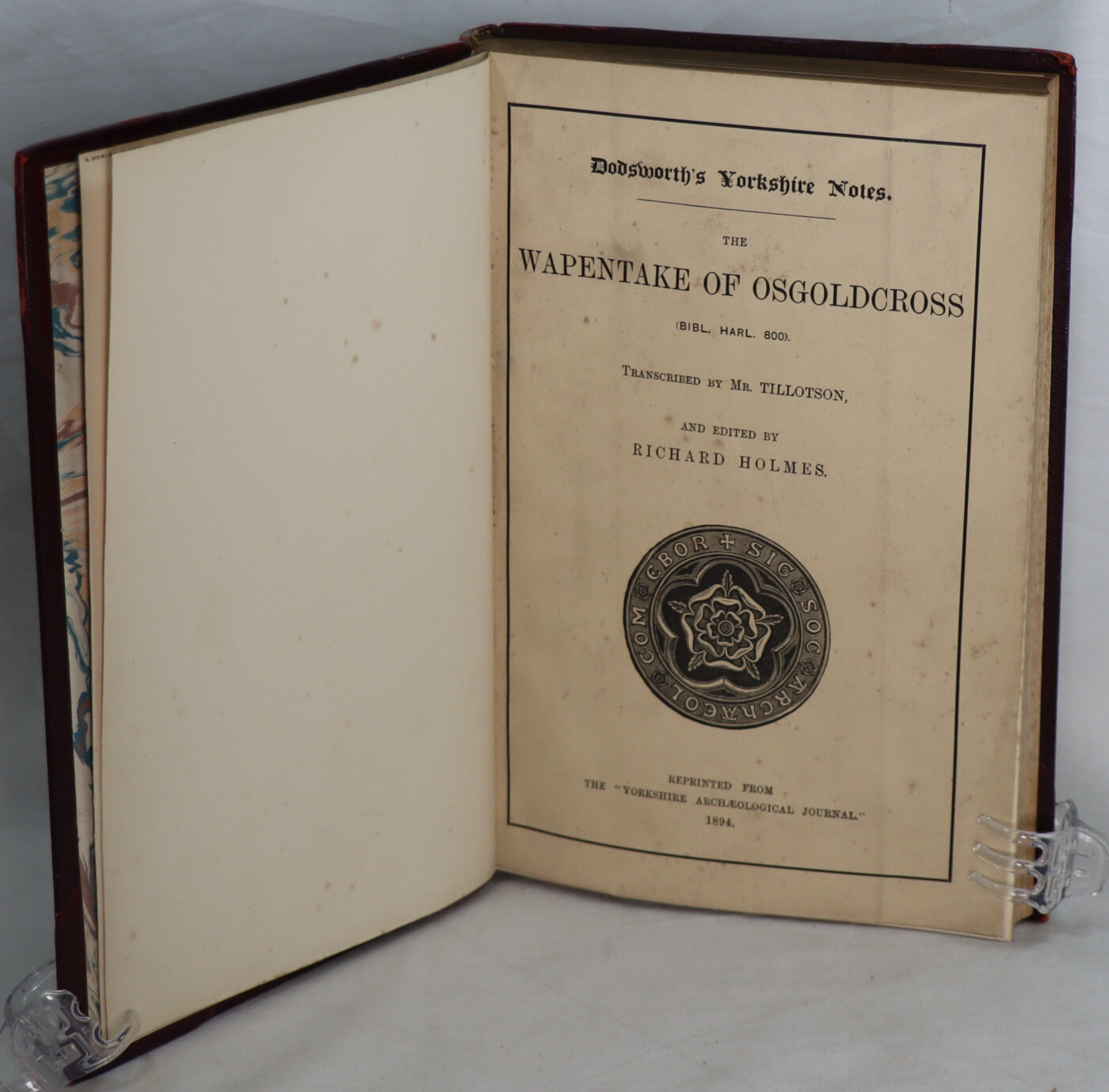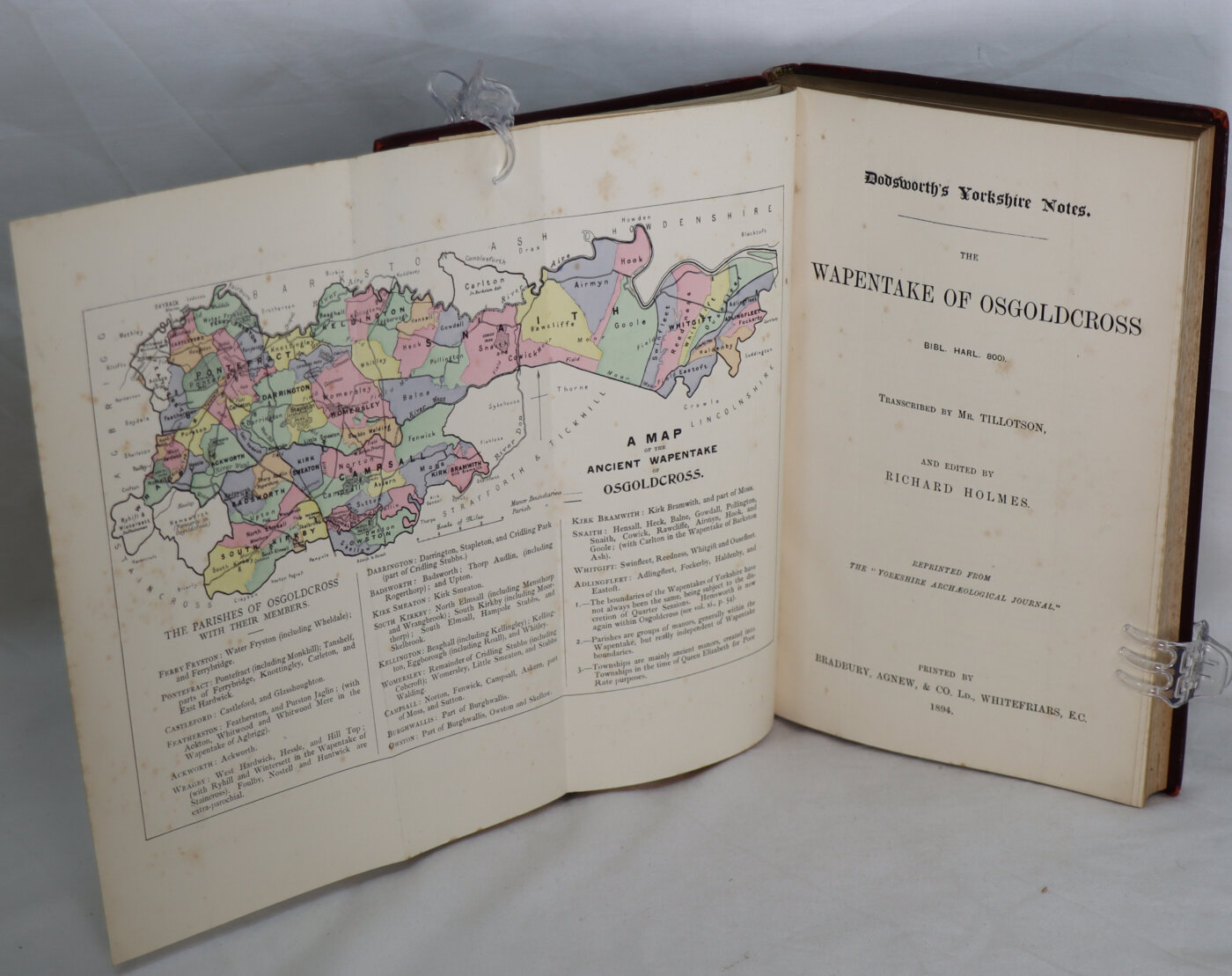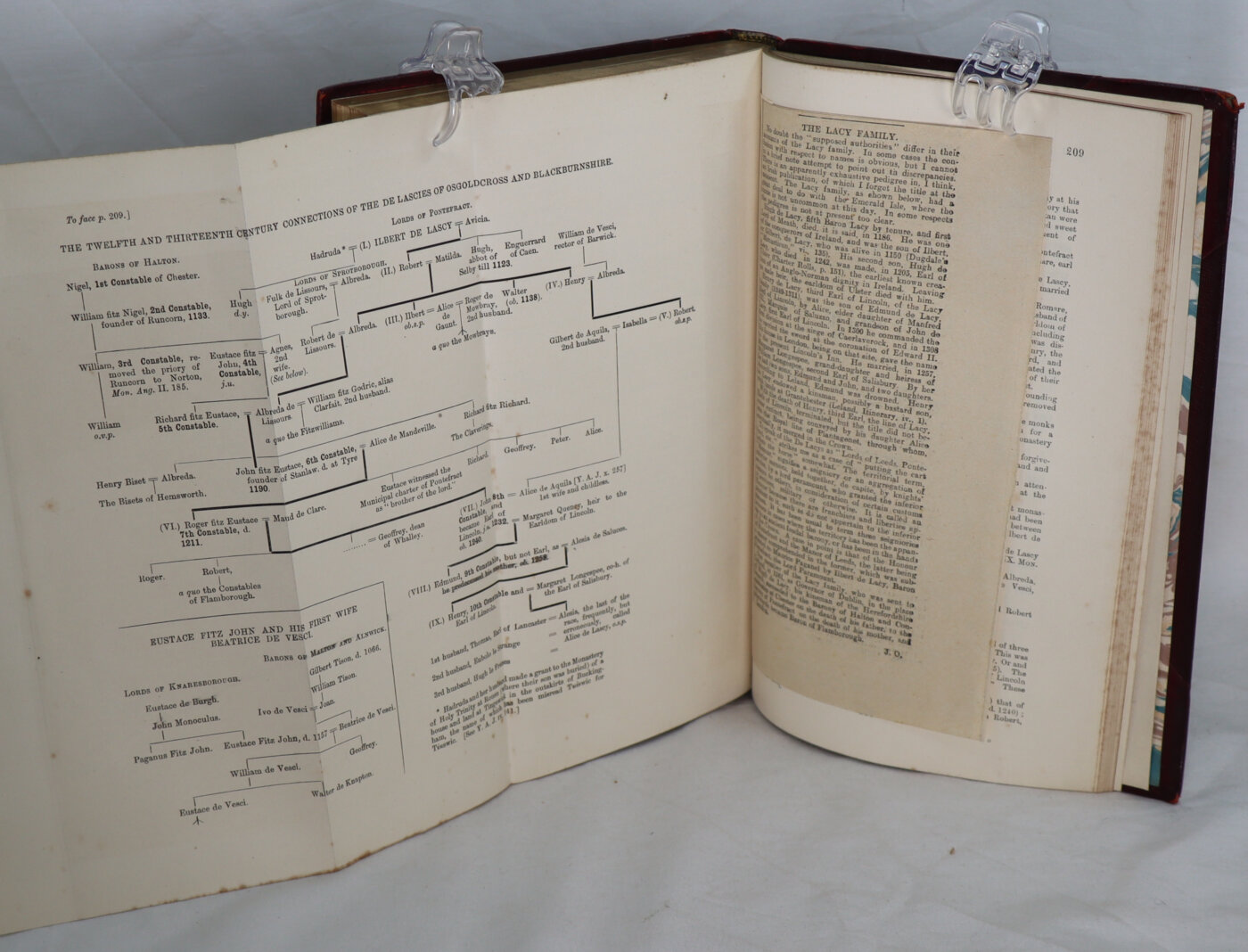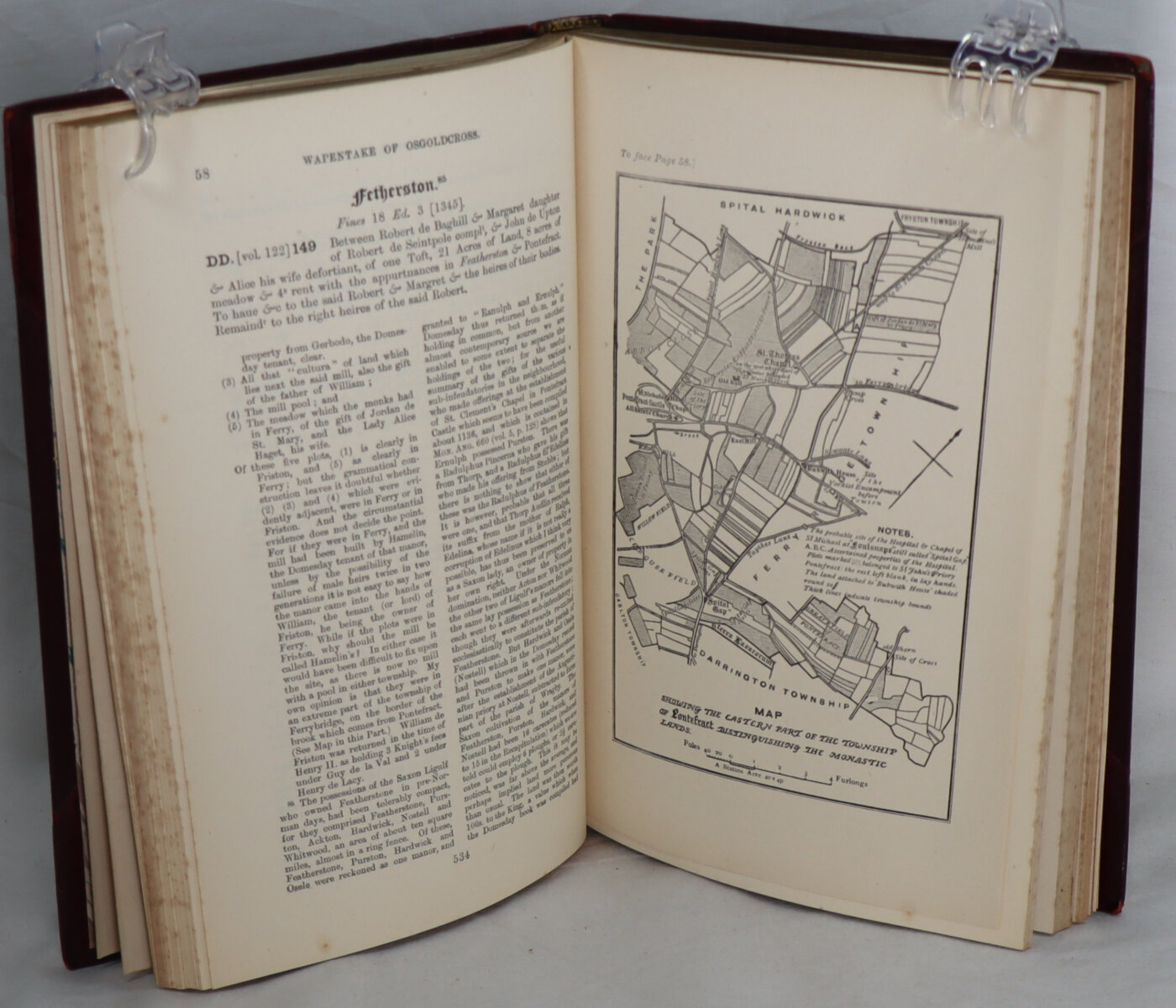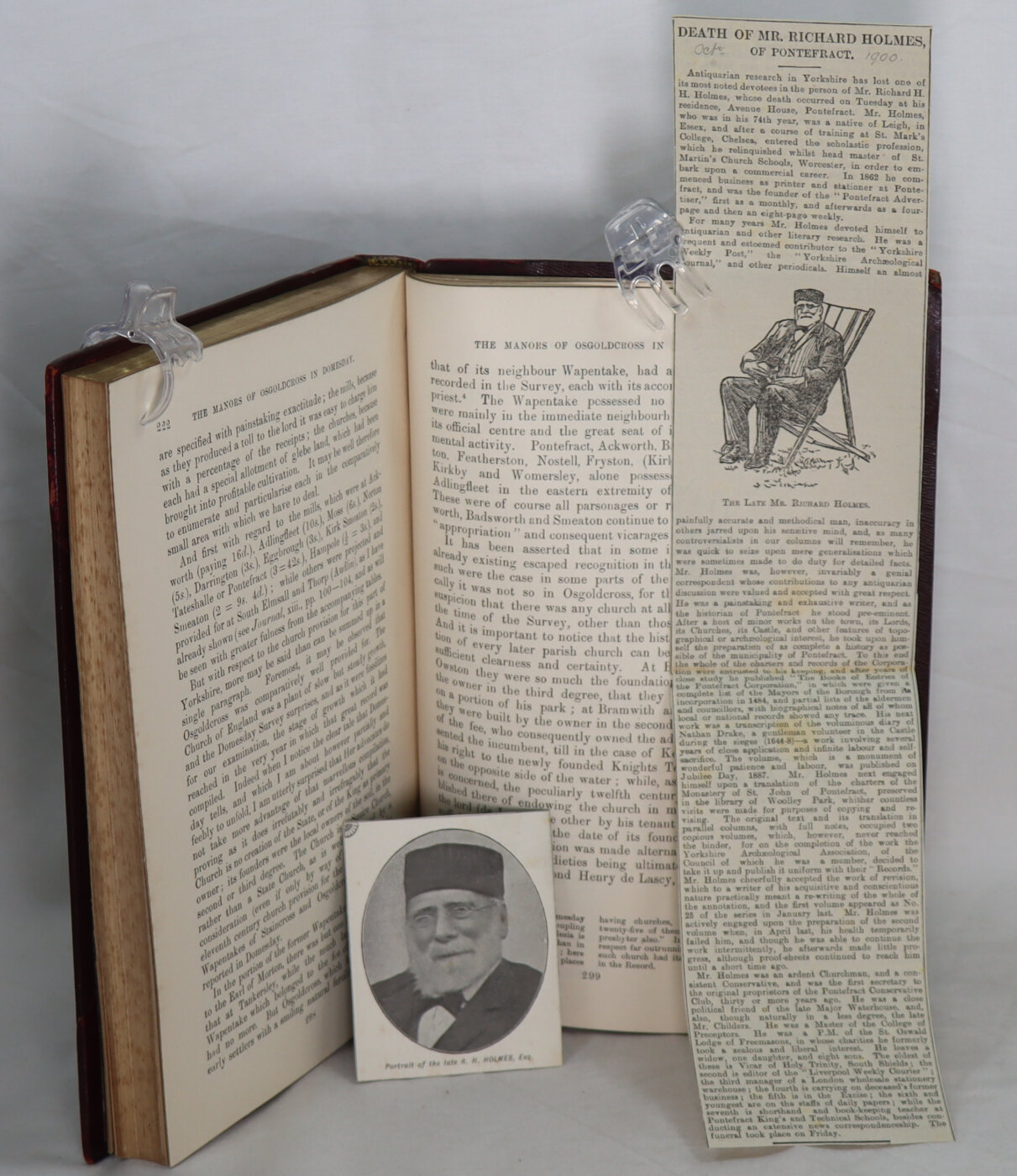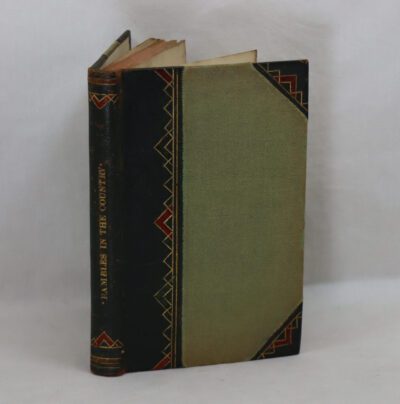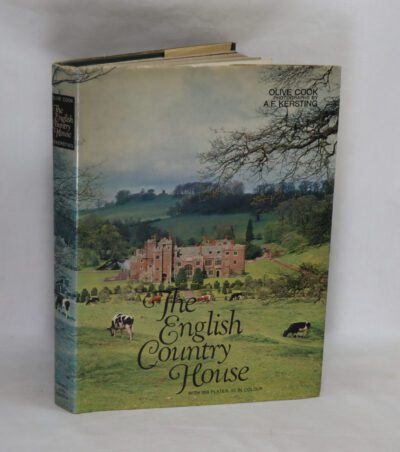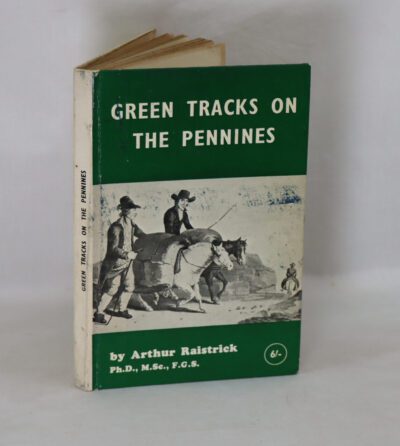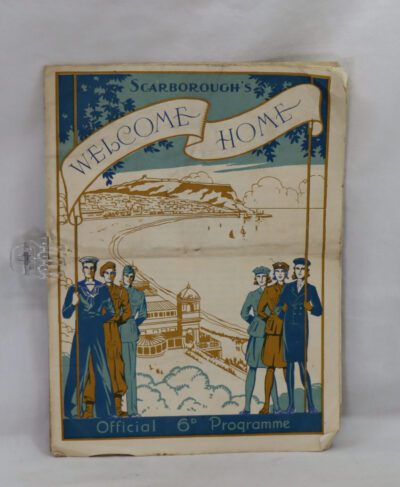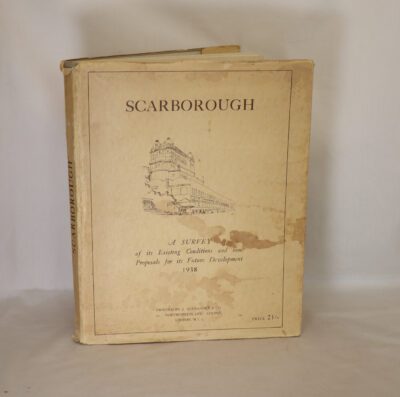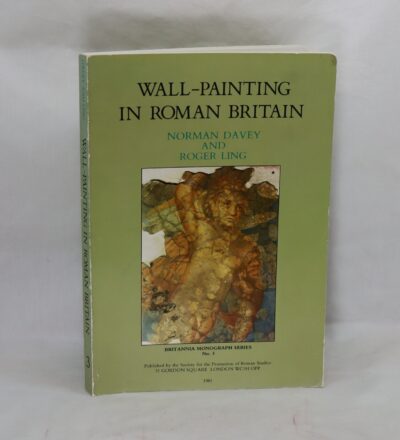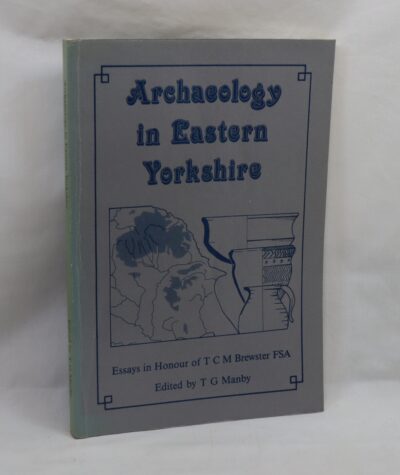Dodsworth's Wapentake of Osgoldcross.
Printed: 1894
Publisher: Bradbury Agnew & Co. Whitefriars
| Dimensions | 16 × 23 × 2 cm |
|---|---|
| Language |
Language: English
Size (cminches): 16 x 23 x 2
Condition: Fine (See explanation of ratings)
Item information
Description
Maroon calf spine with gilt title. Maroon cloth boards.
- F.B.A. provides an in-depth photographic presentation of this item to stimulate your feeling and touch. More traditional book descriptions are immediately available.
- Note: This book carries the £5.00 discount to those that subscribe to the F.B.A. mailing list.
First Edition of this very rare book. A book in lovely fine tight condition with (as is seen in the photographs) maps, and illustrations. Regrettably, there is little demand for this unique book: hence the price.
Osgoldcross was a wapentake of the West Riding of Yorkshire, England. It included the parishes of Adlingfleet, Badsworth, Burghwallis, Campsall, Castleford, Darrington, Kellington, South Kirkby, Owston, Pontefract, Whitgift, Womersley, Ferry Fryston and parts of Featherstone, Snaith and Wragby.
The original meeting place of the wapentake was the area which later became Pontefract Market Place
A wapentake was the equivalent of the Anglo-Saxon hundred in the northern Danelaw. In the Domesday Book, the term is used instead of hundreds in Yorkshire, the Five Boroughs of Derby, Leicester, Lincoln, Nottingham and Stamford, and also sometimes in Northamptonshire. The laws in wapentakes were similar to those in hundreds with minor variations. According to the first-century historian Tacitus, in Scandinavia the wapentake referred to a vote passed at an assembly by the brandishing of weapons. In some counties, such as Leicestershire, the wapentakes recorded at the time of Domesday Book later evolved into hundreds. In others, such as Lincolnshire, the term remained in use.
Although no longer part of local government, there is some correspondence between the rural deanery and the former wapentake or hundred; especially in the East Midlands, the Buckingham Archdeaconry and the York Diocese.
History of the name Pontefract.
At the end of the 11th century, the modern township of Pontefract consisted of two distinct and separate localities known as Tanshelf and Kirkby. The 11th-century historian Orderic Vitalis recorded that, in 1069, William the Conqueror travelled across Yorkshire to put down an uprising which had sacked York, but that, upon his journey to the city, he discovered that the crossing of the River Aire at what is modern-day Pontefract had been blockaded by a group of local Anglo-Scandinavian insurgents, who had broken the bridge and held the opposite bank in force. Such a crossing point would have been important in the town’s early days, providing access between Pontefract and other settlements to the north and east, such as York. Historians believe that it is this historical event which gives the township of Pontefract its modern name. The name “Pontefract” originates from the Latin for “broken bridge”, formed of the elements pons (bridge) and fractus (broken). Pontefract was not recorded in the 1086 Domesday Book, but it was noted as Pontefracto in 1090, four years after the Domesday survey.
Roger Dodsworth 1585-1654
Roger Dodsworth was born in 1585 and died in 1654. At an early age he began collecting Yorkshire church notes and pedigrees, and by 1618 he had begun what eventually became the most monumental collection of antiquarian material bequeathed to Bodleian Archives & Manuscripts by the 17th century. Dodsworth spent twenty laborious years on Yorkshire antiquities, but the work naturally led him into many other counties, and after 1638 his interests, although still mainly genealogical and topographical, embraced most of England.
In 1635 he had met Dugdale, and the two had decided to collaborate in a Monasticon Anglicanum, for which Dodsworth had already made extensive collections. These were supplemented by Dugdale chiefly from the Cottonian library and some of the public records. The work was ready for the press in 1650, but the first volume was not actually published until 1655, after Dodsworth’s death, and the second in 1661. For the relative shares of Dodsworth and ‘that grand plagiary’ in this undertaking, see ‘Roger Dodsworth and his Circle’ by N. Denholm-Young and H.H.E. Craster in the Yorkshire Archaeological Journal, vol. xxxii (1934), pp. 5-32. In his later years, apart from the Monasticon, Dodsworth was also gathering material for a history of Yorkshire and for a Baronage. Further details are given in the Dictionary of National Biography.
Arrangement
The press-mark given in round brackets in custodial history after the catalogue number in the case of all Dodsworth MSS. is the one employed by Dodsworth to designate his collections. A list of Dodsworth’s press-marks in their order is given in Joseph Hunter’s Three Catalogues, pp. 79-82.]
Other Finding Aids
Falconer Madan, et al., A summary catalogue of western manuscripts in the Bodleian Library at Oxford which have not hitherto been catalogued in the Quarto series (7 vols. in 8 [vol. II in 2 parts], Oxford, 1895-1953; reprinted, with corrections in vols. I and VII, Munich, 1980), vol. II, nos. 4143-5101.
Custodial History
Of the material received in 1673, many had so suffered from damp in transit that it took Anthony à Wood a month to dry them on the leads of the Muniment room in the School Tower.
Immediate Source of Acquisition
When Dodsworth died his manuscripts passed into the hands of his patron, the third Lord Fairfax, who left them to the Bodleian with his own manuscripts in 1673. Some, however, were not received until 1683-1684.
Want to know more about this item?
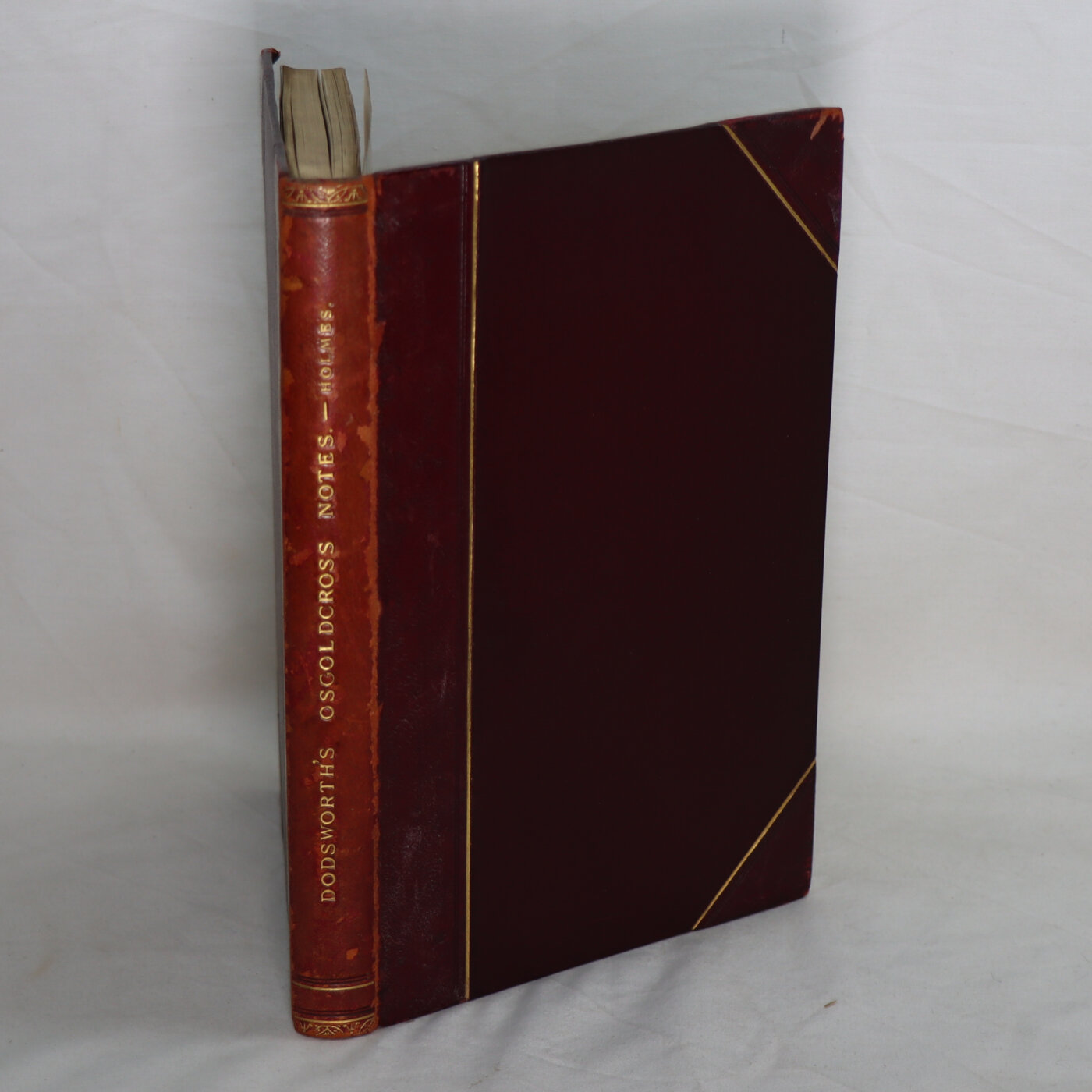
Related products
Share this Page with a friend

